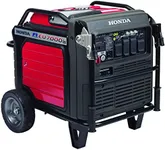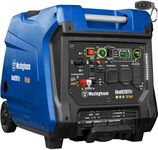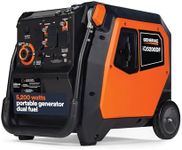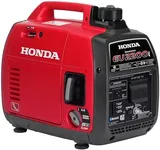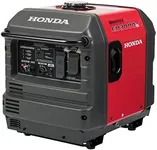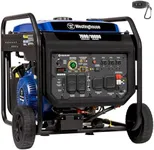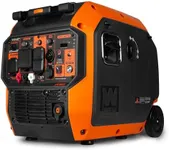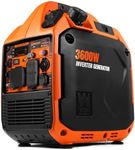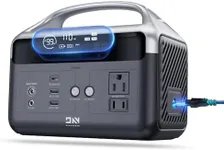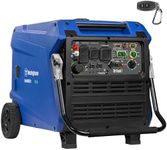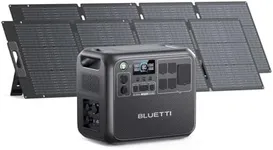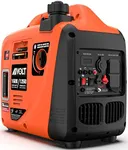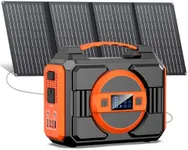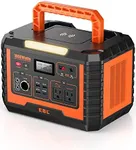Buying Guide for the Best Inverter Generators
When it comes to picking an inverter generator, it's important to start by understanding your intended use. Are you planning to power small appliances on a camping trip, providing backup for sensitive electronics at home during outages, or running tools on a job site? Inverter generators are known for their clean, stable power and quiet operation, making them especially suitable for powering electronics and for portable use. To find the right model for you, you'll want to consider key specifications that influence performance, convenience, and compatibility with your needs.Wattage (Power Output)Wattage refers to the amount of power the generator can provide, measured in watts. You'll typically see two values: running watts (continuous power) and surge watts (the short burst needed to start appliances). This spec is crucial because it determines how many and what kind of devices or appliances you can run simultaneously. Lower wattage units (up to 2000 watts) are ideal for basic needs like charging phones, running small kitchen appliances, or camping gear. Mid-range units (2000–3500 watts) can handle multiple appliances at once and are suitable for most RVs and home essentials. Higher wattages (above 3500 watts) are needed if you plan to power heavier loads like refrigerators, sump pumps, or multiple large devices together. The best way to pick the right wattage is to make a list of what you need to power and add up their wattages, ensuring your generator can handle their combined starting and running needs.
PortabilityPortability describes how easy it is to move and store the generator. Factors that affect this include weight, handle design, and whether wheels are included. Smaller, lighter models are ideal for camping, tailgating, or use on the go, where carrying or moving is frequent. Larger, heavier models with handles and wheels suit situations where you may not need to move the generator very often. Choose a level of portability that's comfortable for your typical use—considering whether you’ll need to lift it into a vehicle or roll it over uneven ground.
Noise LevelNoise level is measured in decibels (dB) and indicates how loud the generator will be during operation. Inverter generators are valued for their quieter performance compared to conventional generators. Lower noise levels (around 50–60 dB) are ideal for campsites, neighborhoods, or anywhere you want to minimize disturbance. Higher noise levels (above 65 dB) may be acceptable for job sites or remote uses. The best match for you depends on where you'll run the generator and your sensitivity—or your neighbor’s sensitivity—to noise.
Fuel Efficiency and Run TimeThis specification tells you how long the generator can run on a full tank and how economically it uses fuel. A longer run time at a given load means fewer interruptions for refueling, which is particularly important for overnight use or during extended power outages. Shorter run times might be fine for short activities or occasional use. Consider how often and for how long you'll use the generator, then pick a model that offers a comfortable balance of size (for longer fuel storage) and convenience for your scenario.
Clean Power (THD – Total Harmonic Distortion)Inverter generators are known for supplying 'clean' power, which means a steady, stable flow of electricity with minimal fluctuations. This is measured by Total Harmonic Distortion (THD), with lower percentages (below 5%) being safer for sensitive electronics like laptops, phones, or medical devices. Higher THD can potentially harm such devices. If you're mainly powering electronic gadgets, prioritize a generator with very low THD, but if you’ll be running simple motors or lights, this spec is less critical.
Parallel CapabilitySome inverter generators allow you to connect two units together for double the power output. This is called parallel capability. It's useful if you think your power demands might increase in the future or if you want the flexibility of running a lighter generator most of the time and pairing up for heavy loads when needed. If you don’t expect to need more power down the line, this feature may not matter as much, but it offers futureproofing if your needs might grow.
Outlet Types and FeaturesGenerators come with different sets of outlets, such as household AC, USB, or RV-ready plugs. This determines what devices you can plug in directly without adapters. Choose a model with outlets that match your typical appliances—e.g., an RV outlet for travel trailers, USB for charging gadgets, or multiple AC outlets for general use. Pay attention to special features like digital displays, remote start, or covered outlets for outdoor use, selecting whatever enhances ease and safety for your likely scenarios.
